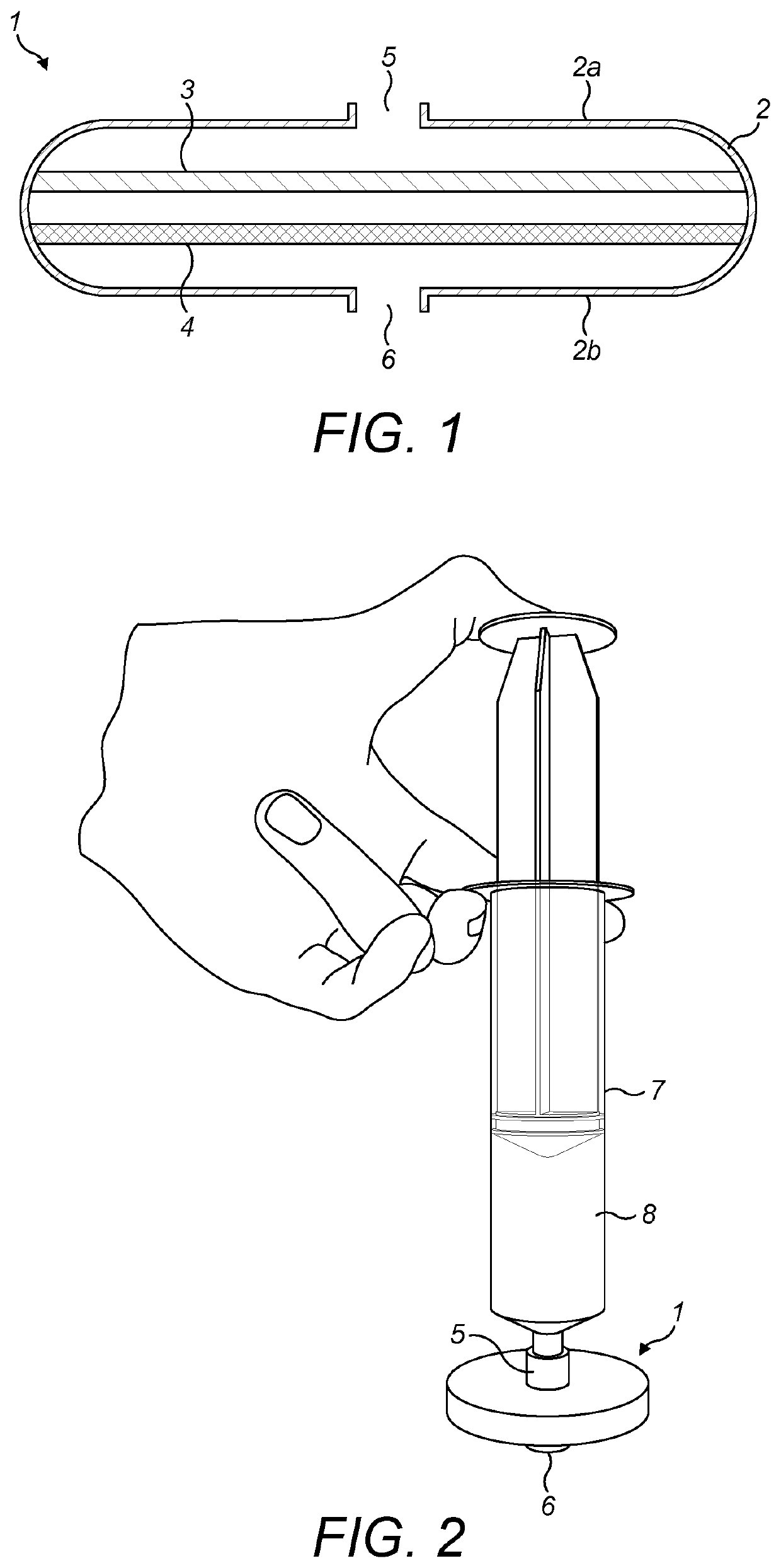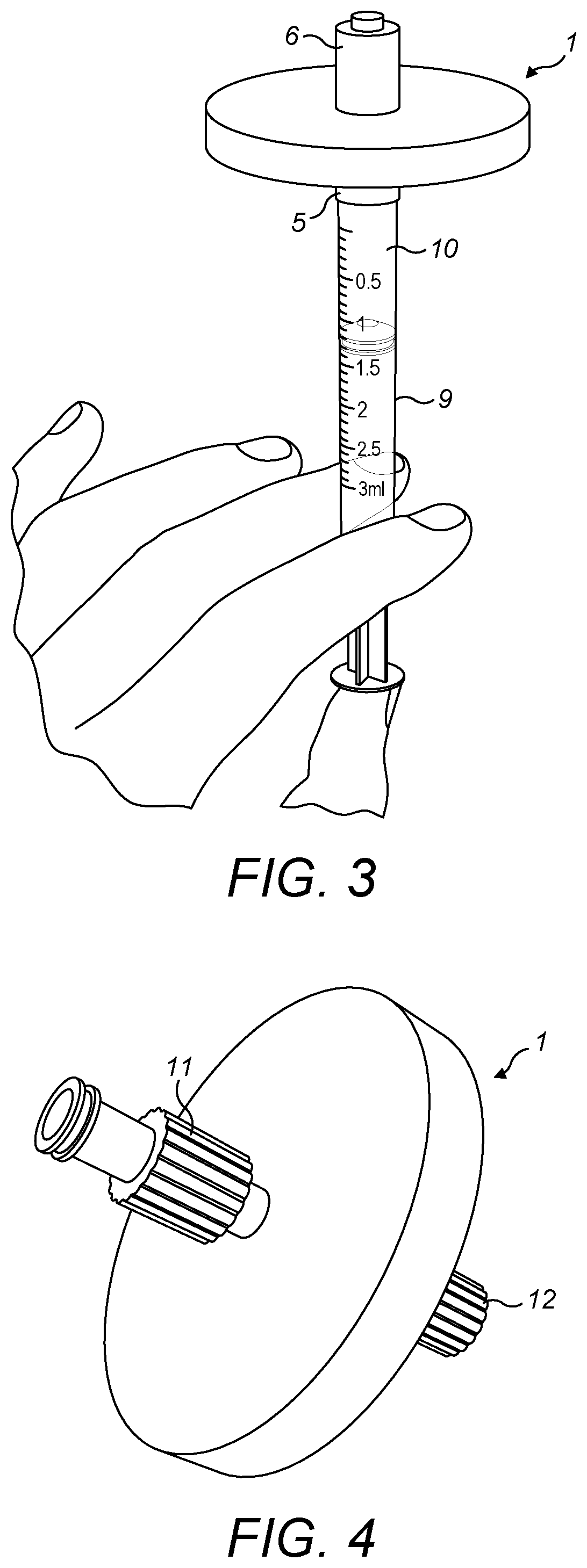Filter assembly, kit and methods
a filter and kit technology, applied in the field of filter assembly, can solve the problems of reducing the volume of sample which can be filtered, the tendency of the membrane to be clogged with suspended particulate matter in the sample, and the risk of contamination by the sampler or the environmen
- Summary
- Abstract
- Description
- Claims
- Application Information
AI Technical Summary
Benefits of technology
Problems solved by technology
Method used
Image
Examples
example 1
[0067]A filter assembly as illustrated in FIG. 1 is provided having a first glass fibre (GF) membrane with a pore size of 5 μm and a second polyethersulfone (PES) membrane with a pore size of 0.8 μm. A sample is taken from a pond and filtered through the filter assembly, introducing the sample into the inlet of the filter assembly using a syringe and passing the filtered sample out of the filter assembly through the outlet. A preservative solution comprising SDS, EDTA and sodium chloride is introduced into the filter assembly in an upwards direction through the inlet using a second syringe until the preservative appears at the outlet of the filter assembly. The inlet and the outlet of the filter assembly are capped and the filled filter assembly is transported for analysis of the captured eDNA.
example 2
[0070]Samples have been filtered using a range of different filters to compare the performance in terms of the average volume of sample it is possible to filter, and the average DNA concentration detected following filtration. The results are set out in the table below:
AverageAverage DNAvolumeStandardConcentration(ml)deviation(ng / ml)Filter 127.136.470.22Filter 250.8310.210.45Filter 361.437.480.24Filter 4 (industry standard)17825.880.900.8 μm pore filter268.3360.141.571.2 μm pore filter338.3365.553.550.8 μm filter + prefilter965191.229.08
[0071]Filter 1 was a cellulose membrane (Alpha cellulose) with a pore size of 0.45 μm. The volume of sample filtered varied between 22 and 26 ml, with the concentration of DNA captured ranging from 0.112 to 0.34 ng / ml over 4 repetitions.
[0072]Filter 2 was a PES membrane with a pore size of 0.22 μm (from Fischer Scientific). The volume of sample filtered varied between 50 and 70 ml, with the concentration of DNA captured ranging from 0.212 to 0.776 ng...
PUM
| Property | Measurement | Unit |
|---|---|---|
| pore size | aaaaa | aaaaa |
| pore size | aaaaa | aaaaa |
| pore size | aaaaa | aaaaa |
Abstract
Description
Claims
Application Information
 Login to View More
Login to View More - R&D
- Intellectual Property
- Life Sciences
- Materials
- Tech Scout
- Unparalleled Data Quality
- Higher Quality Content
- 60% Fewer Hallucinations
Browse by: Latest US Patents, China's latest patents, Technical Efficacy Thesaurus, Application Domain, Technology Topic, Popular Technical Reports.
© 2025 PatSnap. All rights reserved.Legal|Privacy policy|Modern Slavery Act Transparency Statement|Sitemap|About US| Contact US: help@patsnap.com


